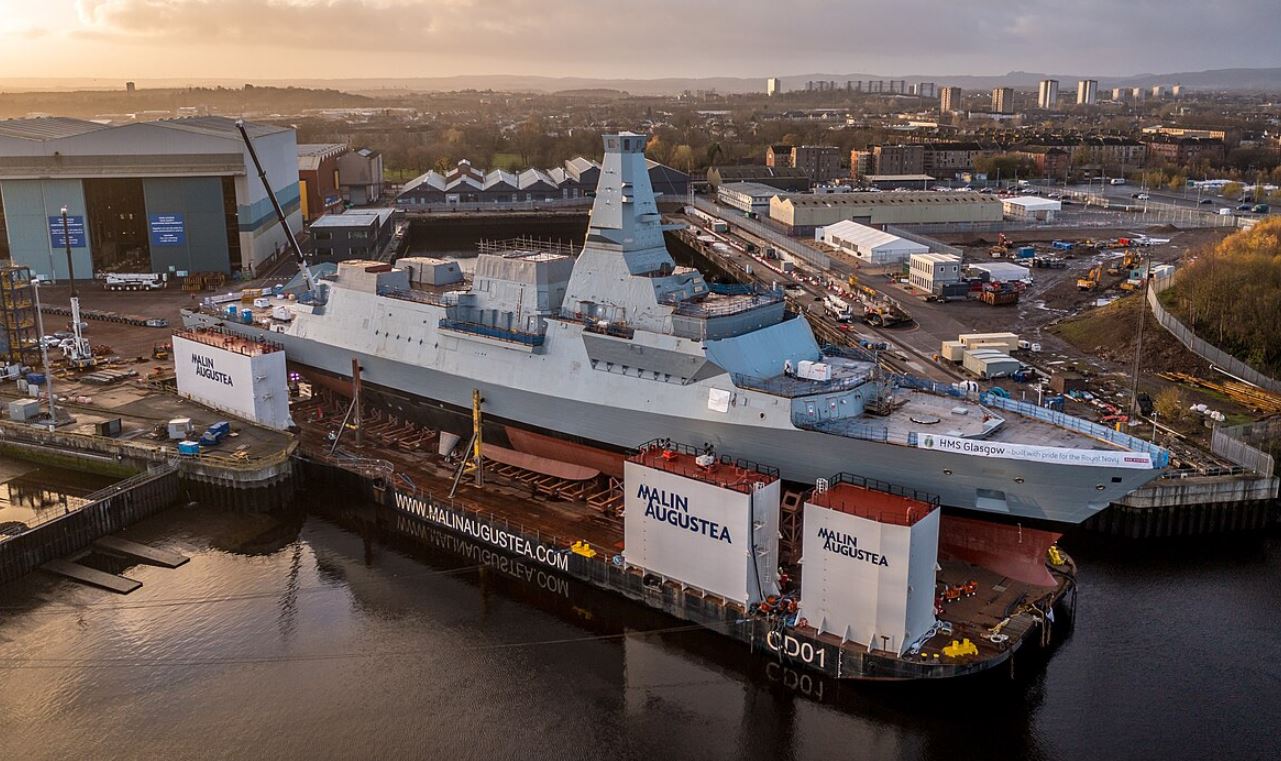An investigation has been launched after the Royal Navy’s HMS Glasgow was “damaged intentionally” with dozens of its cables cut at a Scottish shipyard.
The UK Defence Journal reports “claims that a group of disgruntled contractors have interrupted the fitting out process of the Type 26 Frigate by severing over 60 cables.”
“The suspected motive” behind the damage “is said to be an issue related to payment disputes”, the journal continues, “although this cannot be confirmed.”
BAE Systems, the defence contractor confirmed the damage caused to HMS Glasgow at its Scotstoun shipyard on the river Clyde in Glasgow. Work to fit out the first of eight type 26 frigates was suspended and an internal investigation launched following the discovery of apparent sabotage this week.
“We immediately launched an internal investigation, alongside our suppliers, and temporarily paused work on the ship to inspect every area of the vessel and ensure our high standards and quality controls are met,” said a spokesperson for BAE Systems, Europe’s biggest defence contractor.
“Normal operations have now resumed and an assessment is under way to scope the repairs needed.”
Police were called to the report of damage to the vessel which was evacuated as a precaution.
Around 23,000 cables will be installed on the frigate, which is being built alongside HMS Cardiff and HMS Belfast by BAE Systems in Glasgow. The company was awarded a £4.2 billion contract to build five more frigates by the government in November.
“HMS Glasgow is the first in a new generation of cutting-edge frigates called the City-class, exceptional ships designed to adapt and to deliver manpower and capabilities to meet every challenge,” states the Royal Navy website. “HMS Glasgow is the first City-class Type 26 Frigate, a fast, adaptable, future-proofed ship built in her namesake city. She will enter service in the mid-2020s.”
The anti-submarine warship is built to adapt to changing missions, “from disaster relief and humanitarian aid operations to embarking military forces or supporting diving operations.”
The frigate will have a range of more than 7,000 nautical miles and a top speed above 26 knots, carrying 161 personnel. Its flight deck can accommodate helicopters up to the size of RAF Chinooks and its loading bay is designed to adapt to “house and deploy vessels, vehicles and containers.”
Meanwhile, the UK’s £3 billion flagship aircraft carrier, the HMS Prince of Wales is being stripped down for parts, according to a recent report by the Telegraph.
The UK’s biggest – and most expensive – warship has “reportedly spent fewer than 90 days at sea” since its launch in 2020. It suffered a series of leaks before breaking down on its “landmark mission” to the US last summer after damaging a propeller shaft.
HMS Prince of Wales is undergoing “equipment cannibalisation” with stripped arts used on its sister ship, HMS Queen Elizabeth.
A Royal Navy spokesperson said transferring equipment “between ships of the same class to ensure operational availability and avoid delays” is “not unusual”.
The spokesperson said the Royal Navy remains “committed to ensuring HMS Prince of Wales commences her operational programme as planned, in autumn 2023, including operational flying training and trials.”




